The Ultimate Guide to Turkish Coffee
Thick, dark, strong and aromatic. Slowly sipping Turkish coffee from a small and intricately-decorated porcelain cup is an experience all by itself. It has even been given UNESCO Intangible Cultural Heritage status. Walking around Turkish cities, you will smell the pungent aromas as coffee houses roast and finely grind the beans before cooking them up in to the deliciousness that is Turkish coffee.
When we arrived into Turkey and started searching for the real deal Turkish coffee, we found that there were tons of different varieties and flavours that we had never even heard of before. We honestly had no idea what we were ordering half the time! So, we tried them all out (for research purposes, obviously) and put together this Turkish coffee guide to reveal our findings and recommendations.
Fancy some Turkish breakfast before your Turkish coffee? Find everything you need to know in this guide.

Disclaimer: This blog post may contain affiliate links. If you click and purchase through an affiliate link, we may earn a small commission at no extra cost to you! This just helps us to continue creating blog posts. We will only ever recommend products and services that we have tried and loved ourselves.
The Ultimate Guide to Turkish Coffee
A Short History of Turkish Coffee
Turkish coffee is understood to have been brought to Turkey from Yemen during the 16th century while the country was under Ottoman rule (so is technically Yemeni coffee). It was a hit with the Ottoman sultans and coffee houses quickly sprung up and became an integral part of daily life with regular Turks too.
An Ottoman ruler who came into power later on, was concerned that people congregating in coffee houses may be conspiring against him, and so coffee houses were banned. Drinking coffee had become so embedded into daily life that Turks continued to meet and drink in the coffee houses even though there were at risk of severe punishment. The ban obviously didn’t last.
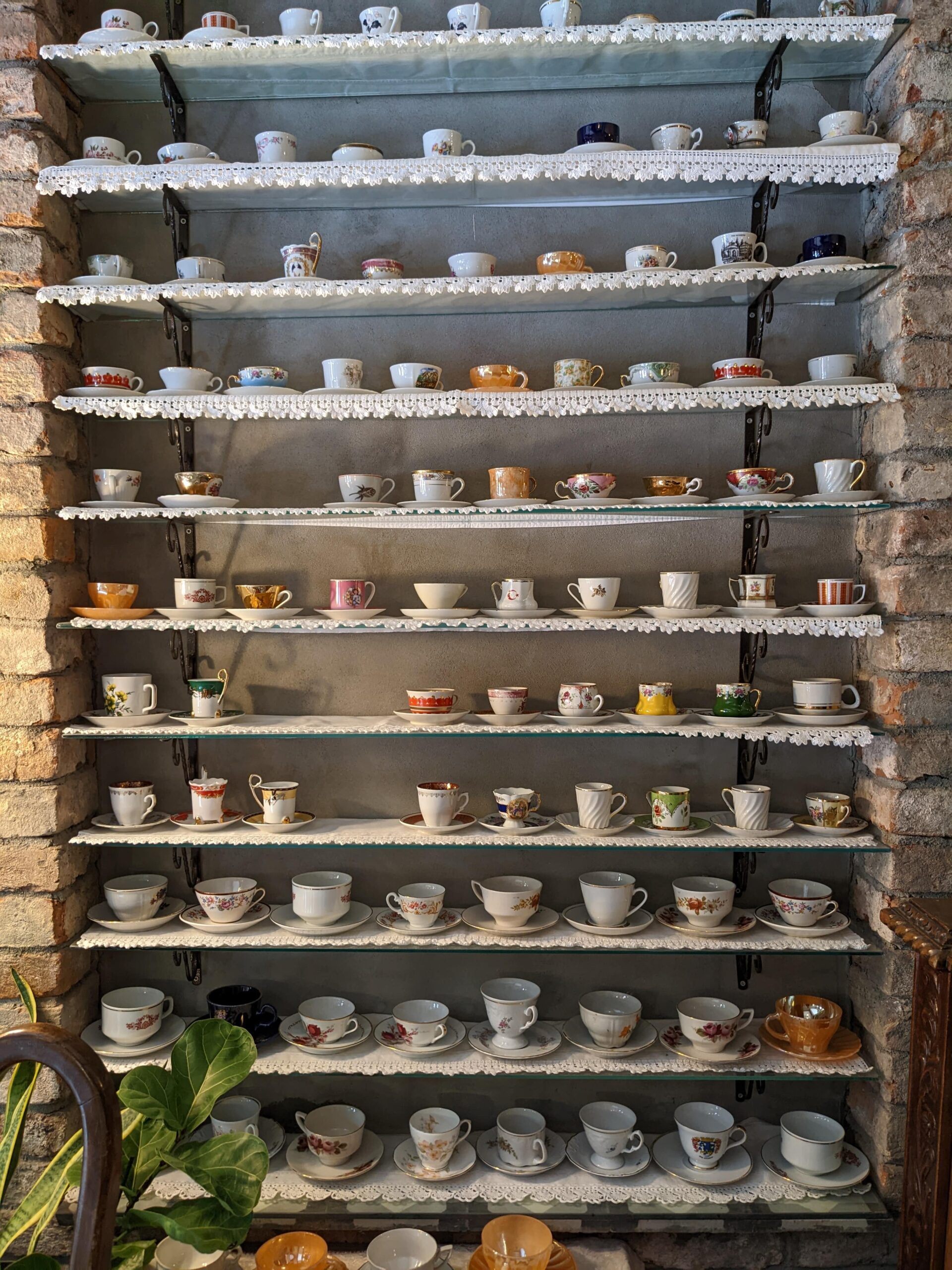
Coffee Preparation
Before making the coffee, you will be asked if you want sugar. Sugar cannot be added to the coffee after heating, as to incorporate it into the coffee requires stirring and heating. Stirring is a big no no when it comes to Turkish coffee.
Coffee beans are very finely ground and placed into a cezve, which is a copper coffee pot with a long handle. They are combined with water and, optionally, sugar, before being placed over heat. Once over a flame, the mixture is brought to a near boil to create a foam. Before the coffee overheats and overflows, the cezve is removed from the heat. The foam is spooned into small porcelain cups (fincan), before the cezve is added back to the heat to create more foam. This is repeated, maybe, twice before the full contents of the cezve is decanted into the porcelain cups.
There are many coffee stalls where they cook their coffee over sand. A huge plate of sand is placed over heat. This is a traditional practice that gives full control over the heat to which the coffee is exposed. Placing the cezve on top of the sand keeps it warm, while burying the cezve into the sand heats it quicker.
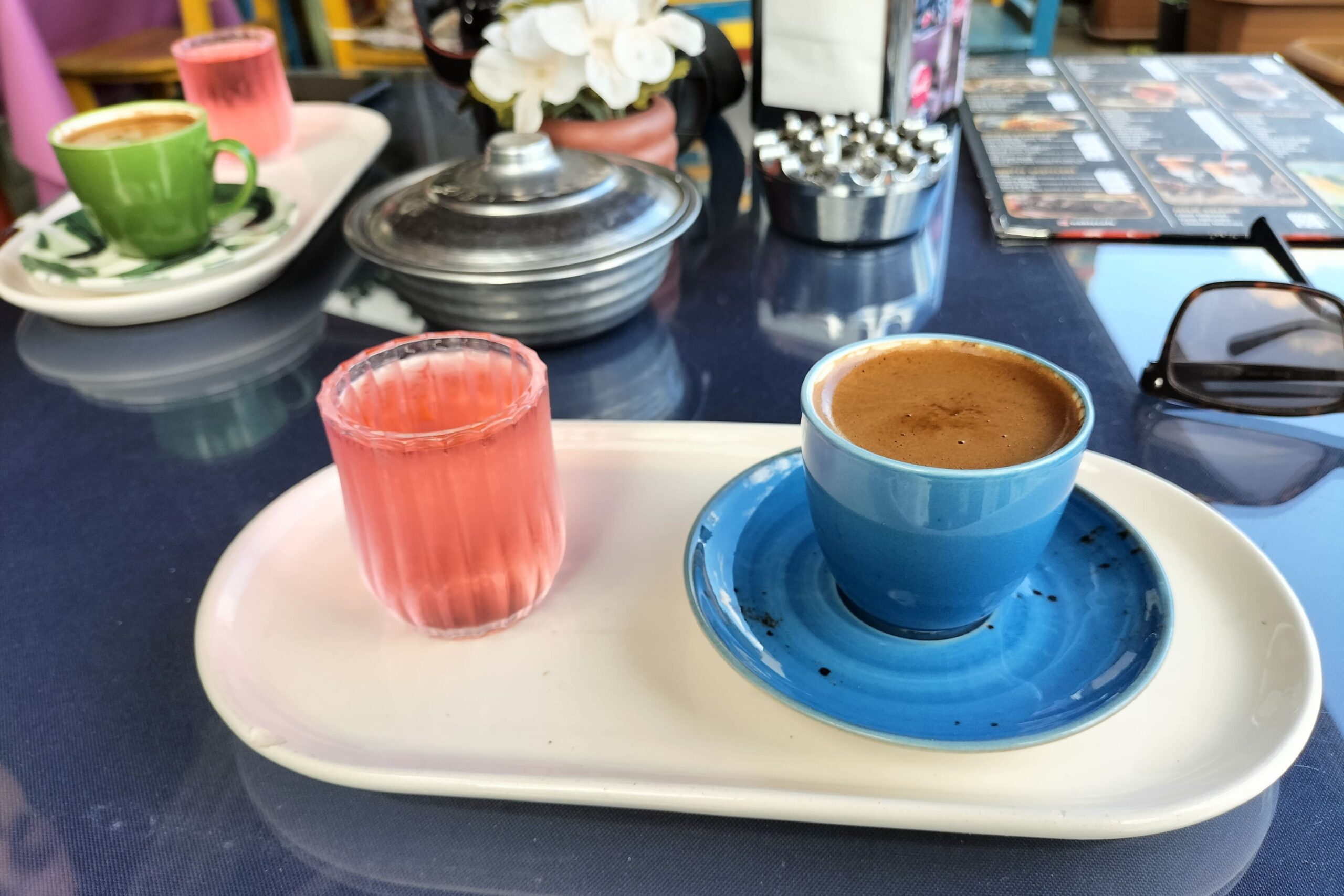
Serving the Coffee
Turkish coffee is traditionally served in fincan, which are small, porcelain cups. A small glass of water and a sweet treat are usually placed alongside the coffee. The water is used to neutralise the palate before drinking the coffee, and the sweet treat to balance out the bitterness from the coffee. Lokum (Turkish delight) or chocolate were what we most often received with our coffees in Turkey. Sometimes we’d get a little glass of rose syrup!
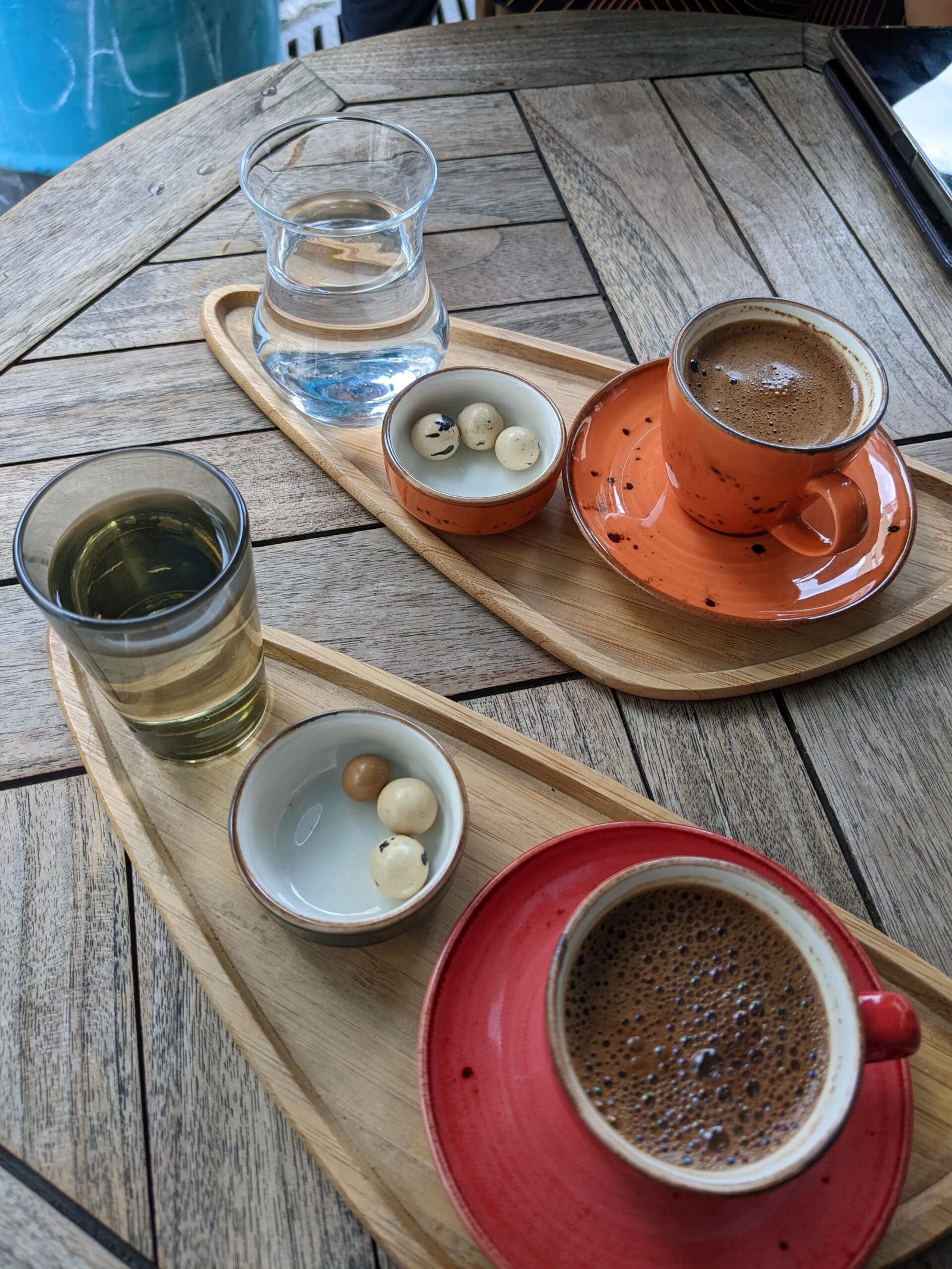
Drinking the Coffee
Let the coffee sit for a few minutes to let the coffee grounds settle at the bottom of the cup. (Don’t stir the coffee because that will distribute the grounds throughout the coffee again!) Take a sip of your water to clear your palate, and then slowly sip your coffee. Turkish coffee is best savoured and drunk at a leisurely pace, don’t it shot it back like an espresso.
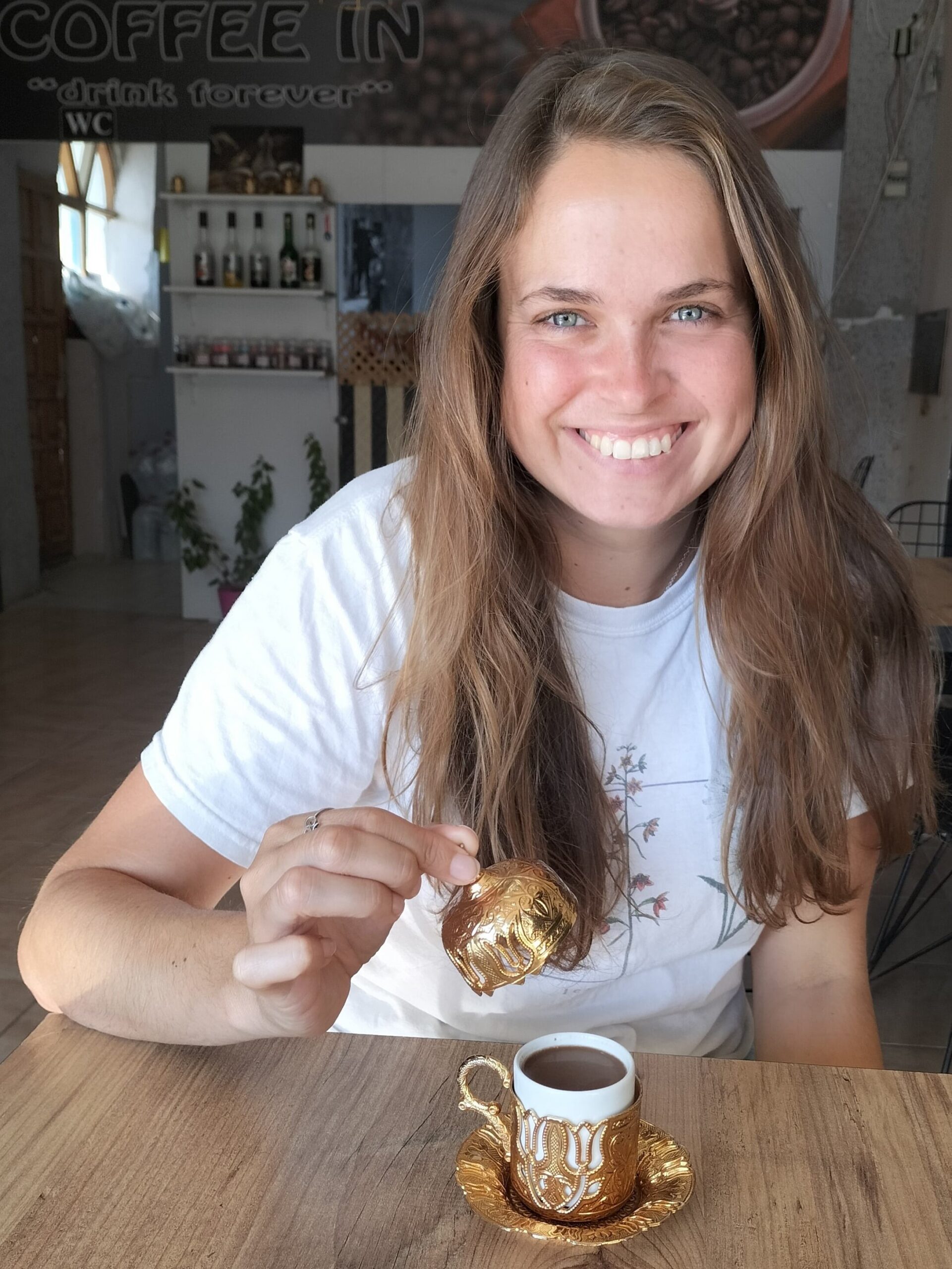
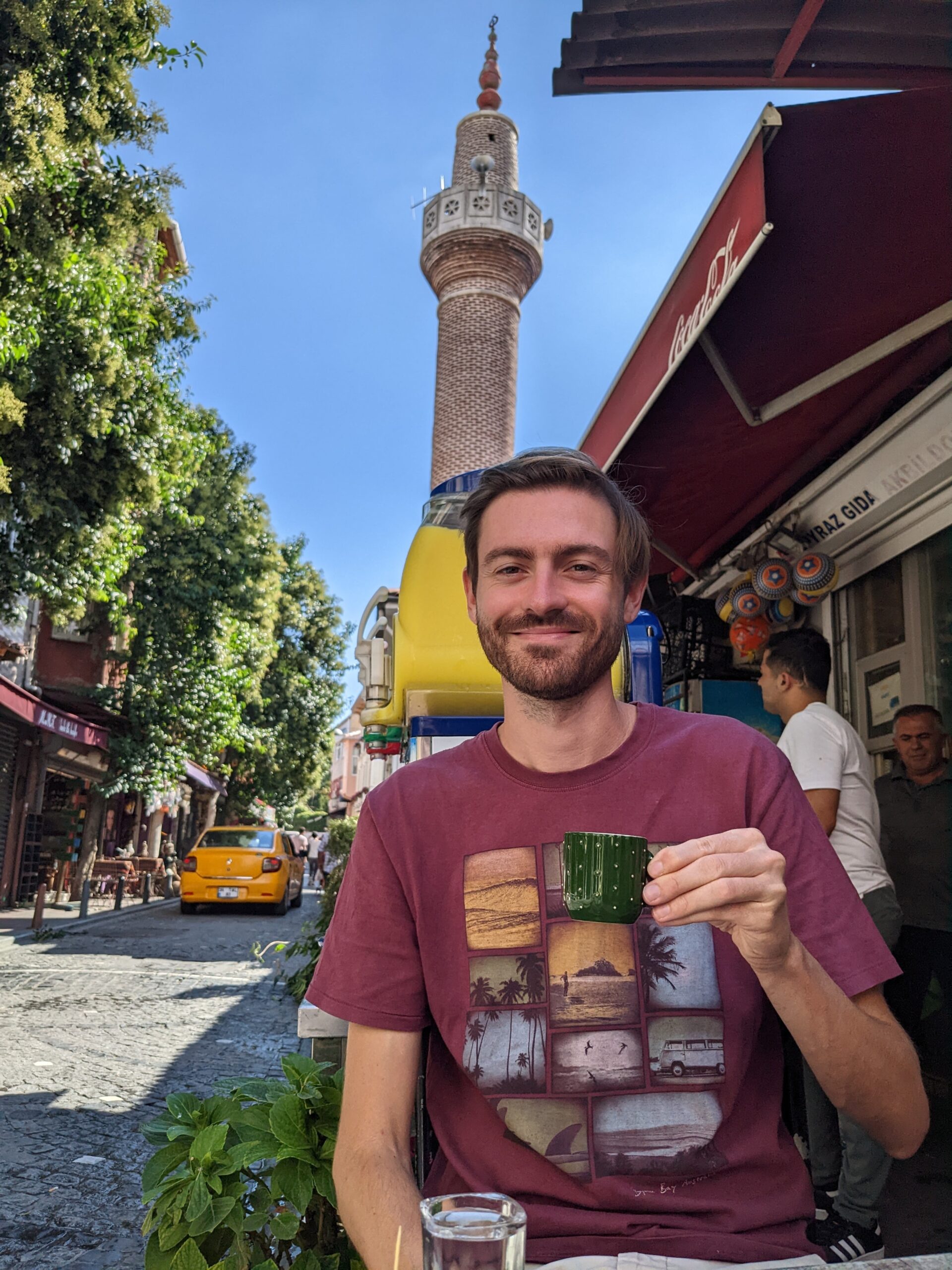
Planning Your Trip?
These are our favourite resources that we use religiously for planning our travels at home and while on the road. Use them for your trip planning too!
Accommodation: for the best deals, we use Booking.com, and Agoda.com. And what’s even better is that you build up loyalty points the more you book, which gets you exclusive offers like extra discounts, free breakfast, free room upgrades, and cashback!
Transport: For buses and trains, we swear by BusBud, and 12Go Asia.
For flights, we find them on Skyscanner and make sure to book through Trip.com because you can rack up points which turn into credit on your account, and sometimes free lounge access.
Travel Insurance: THE best budget-friendly insurance SafetyWing – no question.
SIM Cards/Tickets/Experience: Klook is the way to go!
Different Types of Turkish Coffee
Ottoman
Ottoman coffee is lighter in colour than Turkish coffee as it is mixed with flavours such as cardamom, chocolate etc. It is a beautifully light and aromatic alternative to Turkish coffee.
This is a great option if you’re looking for a gentler, less punchy coffee.

Dibek
Dibek coffee differs from Turkish coffee due to the grinding process of the coffee in a stone pestle and mortar. This is recognised as bringing a more powerful flavour to the coffee.
Honestly, if I had a regular Turkish coffee and a dibek coffee, I wouldn’t be able to tell the difference.
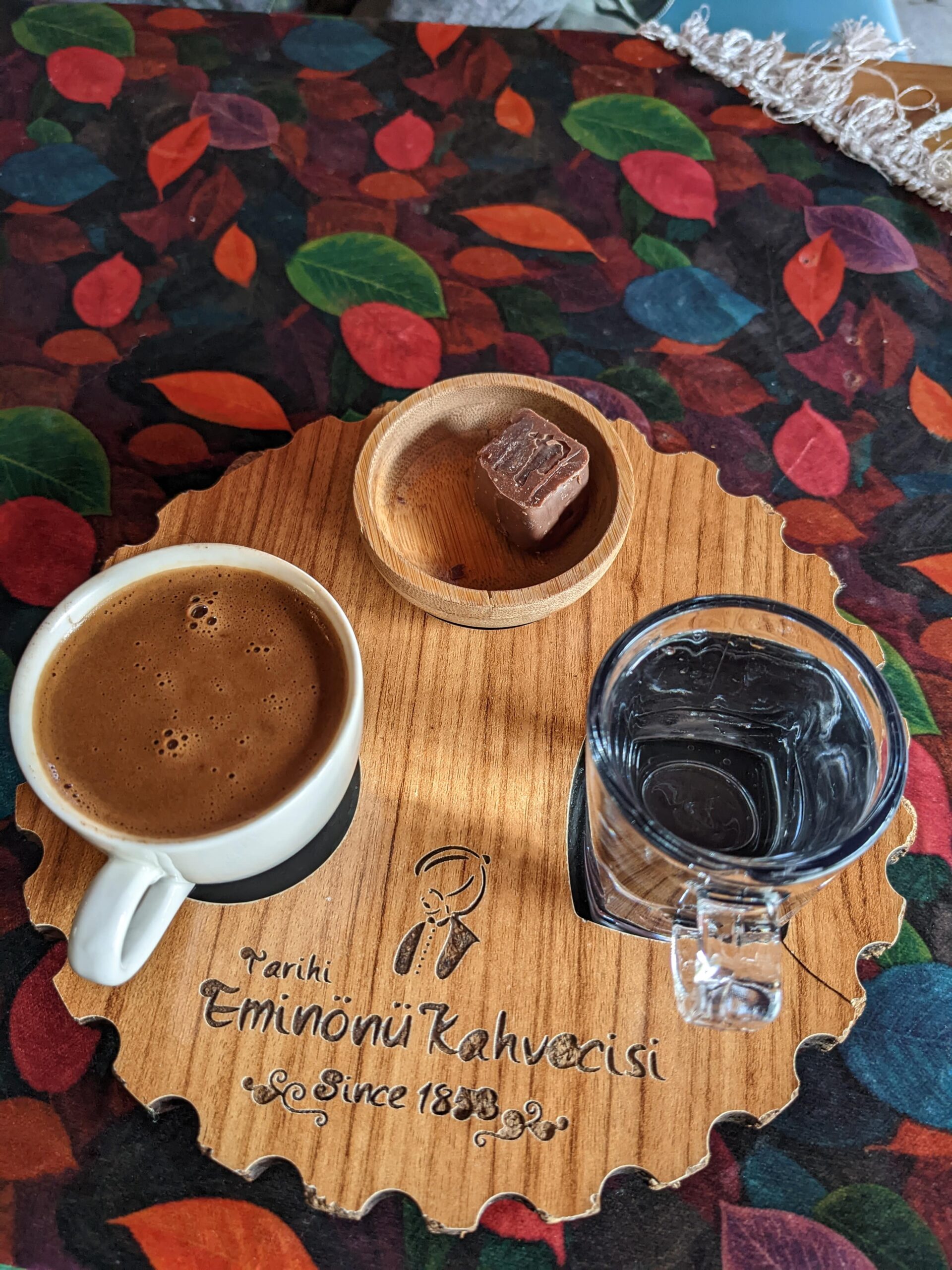
Damla Sakizli
This is a Turkish coffee flavoured with mastic resin. The resin from the mastic tree is often used to flavour lokum (Turkish delight) also. It gives a light, pine flavour to the coffee.
The mastic works really nicely with the coffee, and was a flavour that we hadn’t experienced before. 10/10 would recommend.

Menengic
This isn’t technically coffee because coffee beans are not used. Instead, wild pistachios/pistachio berries are used to create a drink that looks like Turkish coffee but has no caffeine content. It is richer, creamier and not bitter; and is also known as pistachio coffee or Kurdish coffee.
Fragrant and creamy, we ordered this on several occasions because it really is delicious. Not ideal if you’re looking for the pick-me-up coffee effects though.
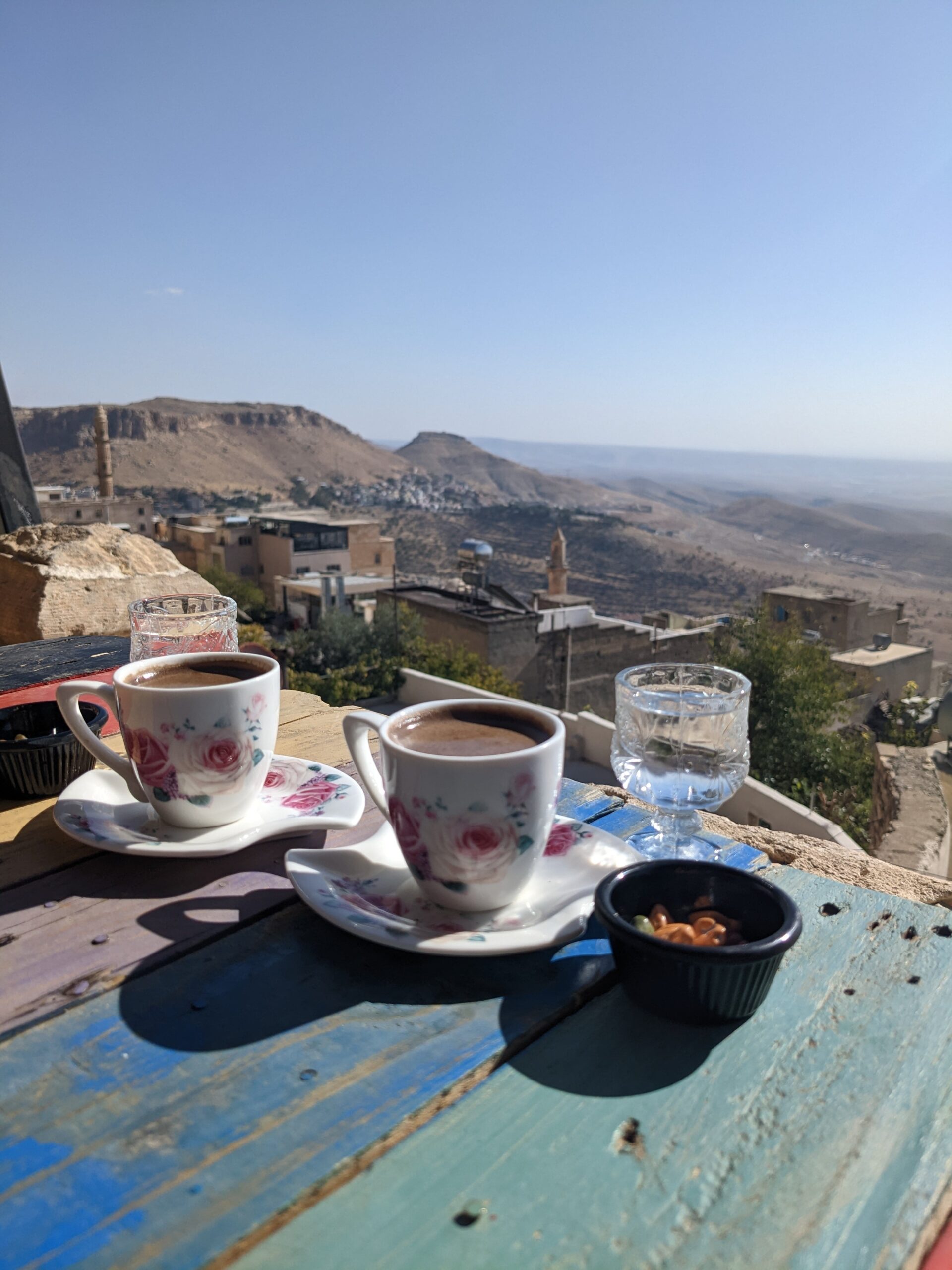
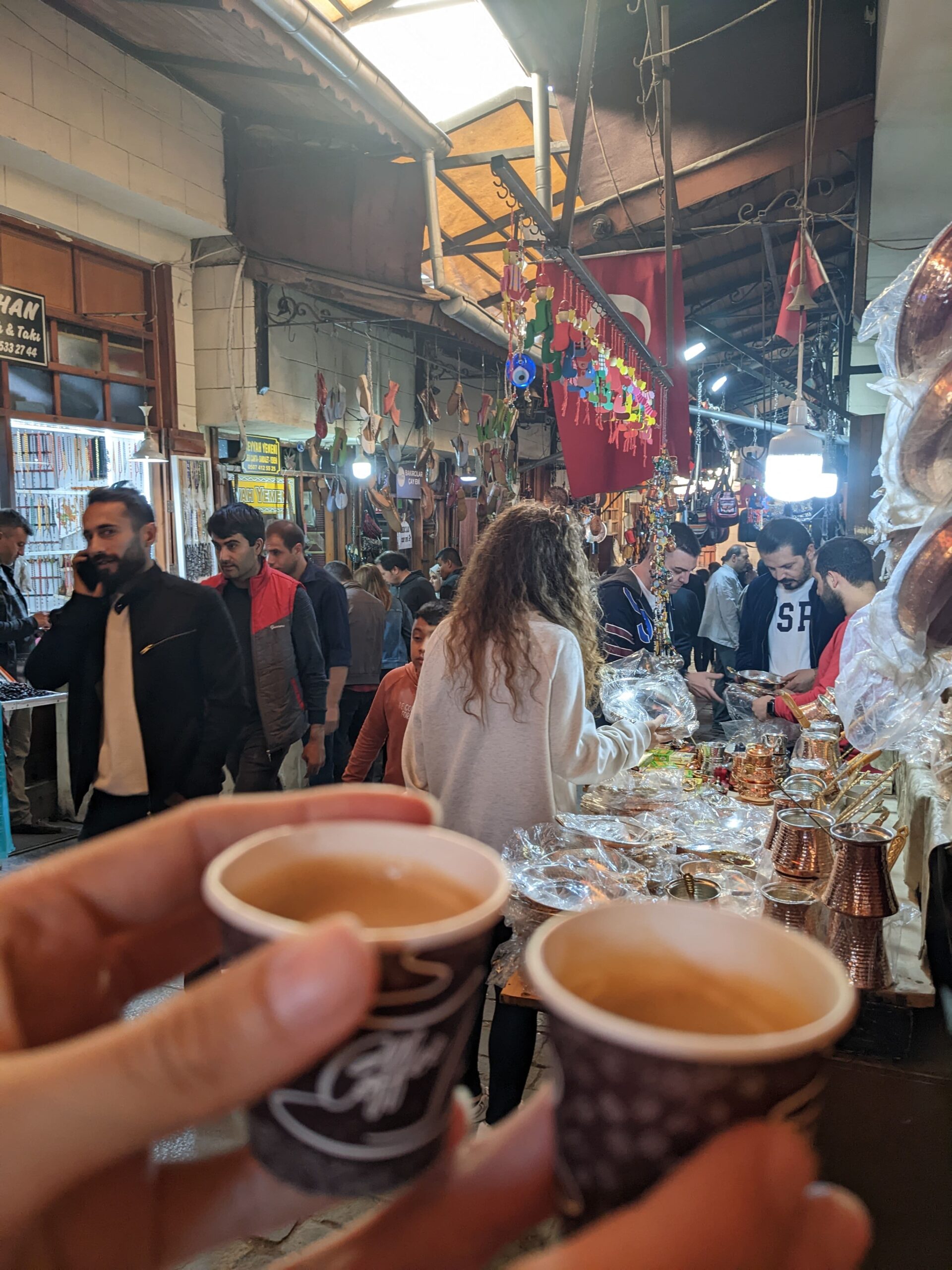
Mirra
The strongest of them all. Mirra coffee is typically drunk in Sanliurfa in the south east of Turkey.
The name derives from the Arabic for bitter, mur. Coarser grounds are used than in Turkish coffee, and so to extract the flavour, the coffee is fully brought to the boil a couple of times. The result is thick, syrupy, very strong and bitter. A tiny amount is served in tiny cups. That really is all that you need!
This is blow-your-face-off strong coffee. Perfect to get you going for the day, but wow, it is shockingly strong. We only ordered it once.

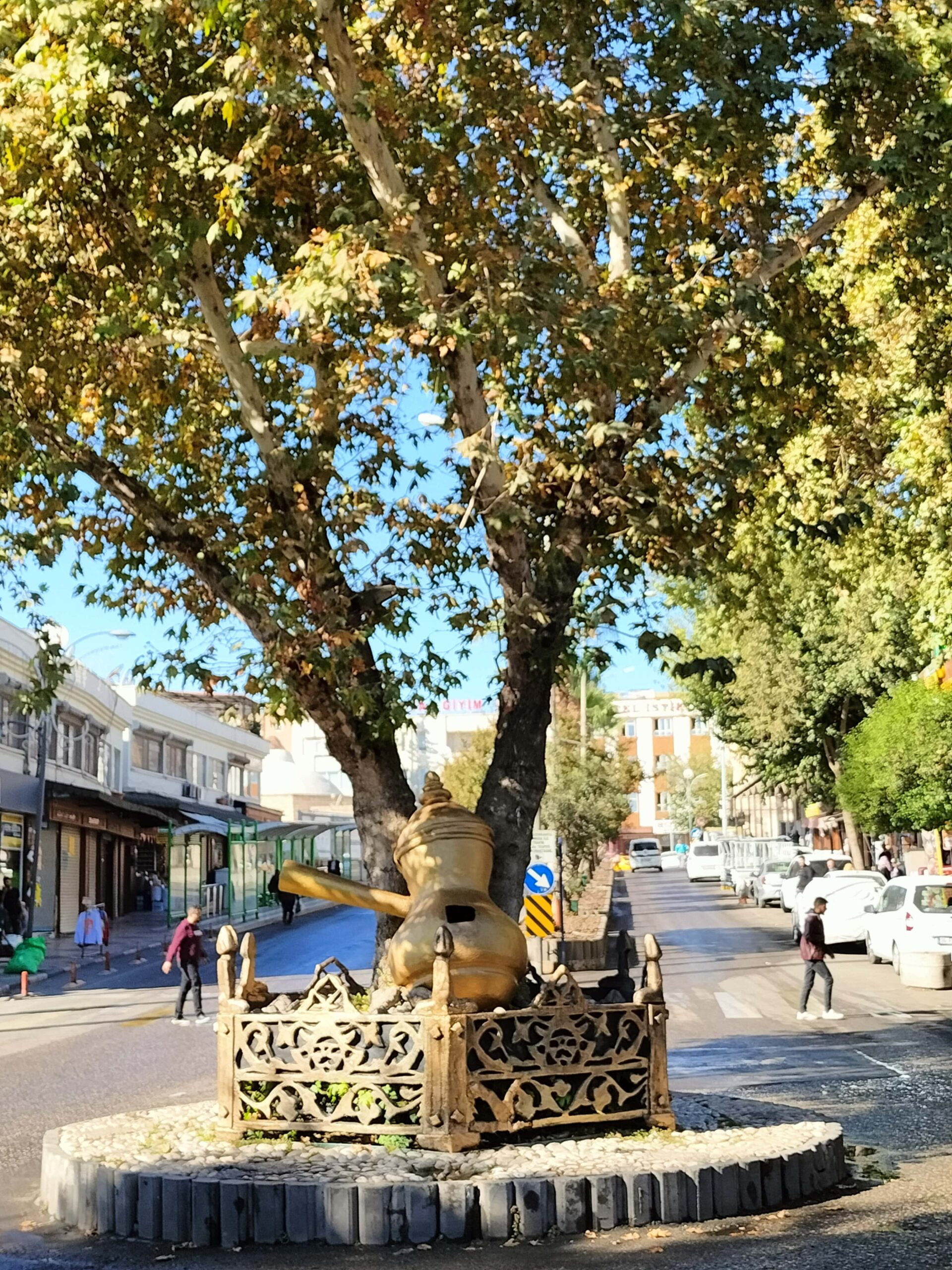
Have you tried Turkish coffee before? Which type is your favourite?
I’d love to hear your thoughts, recommendations and questions!
Like it? Save it!
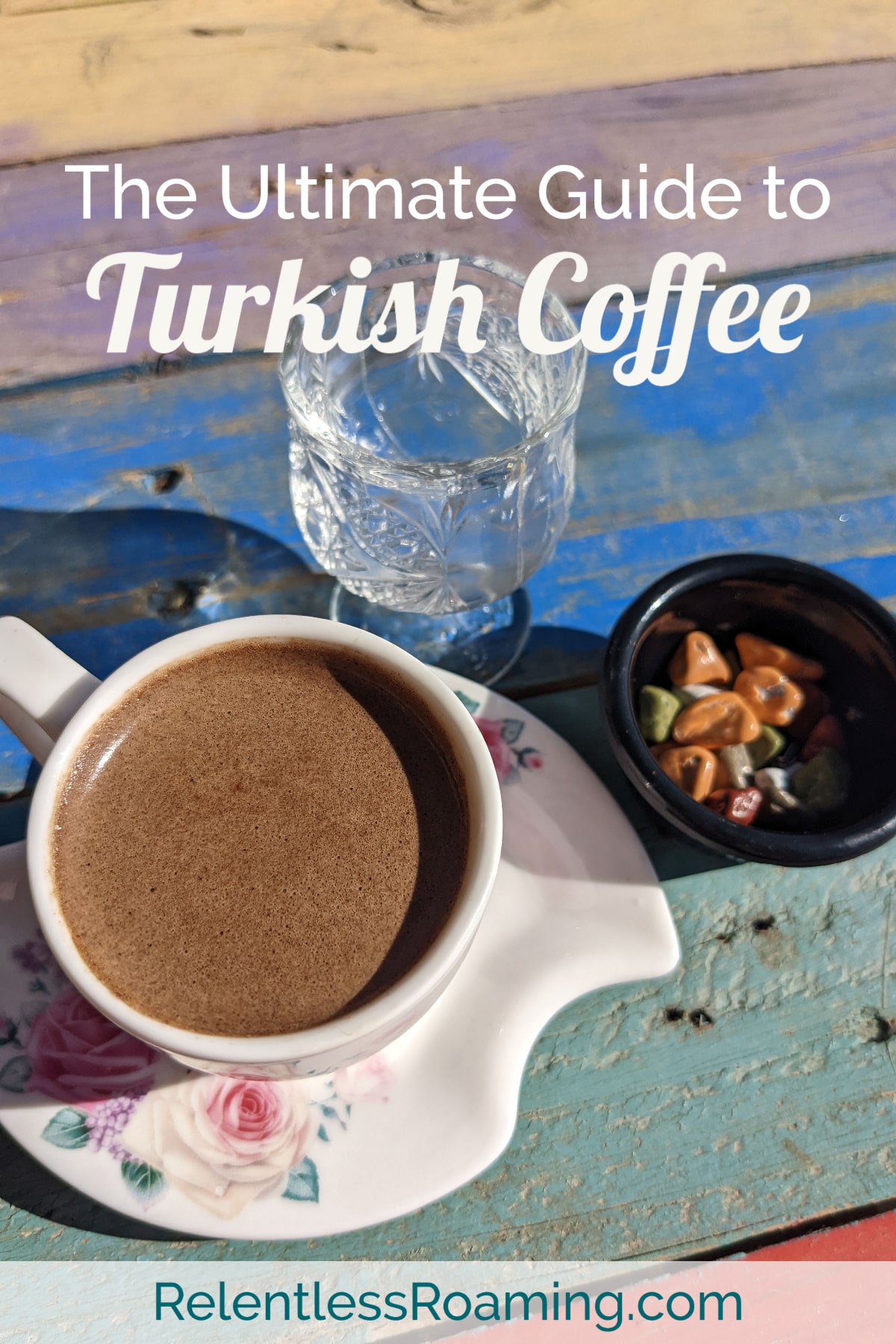
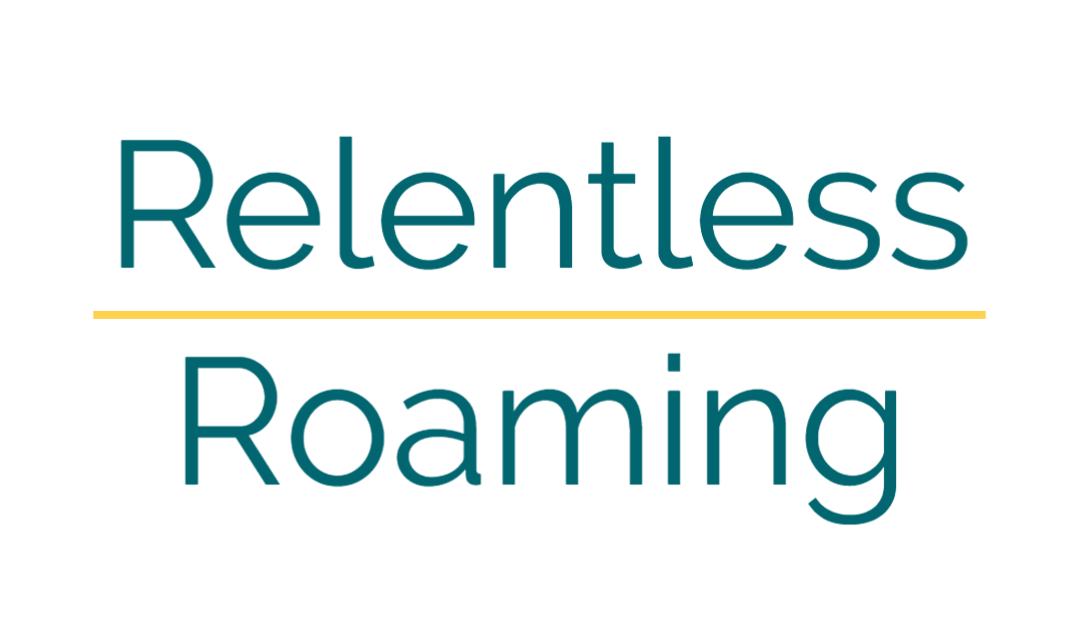

0 Comments